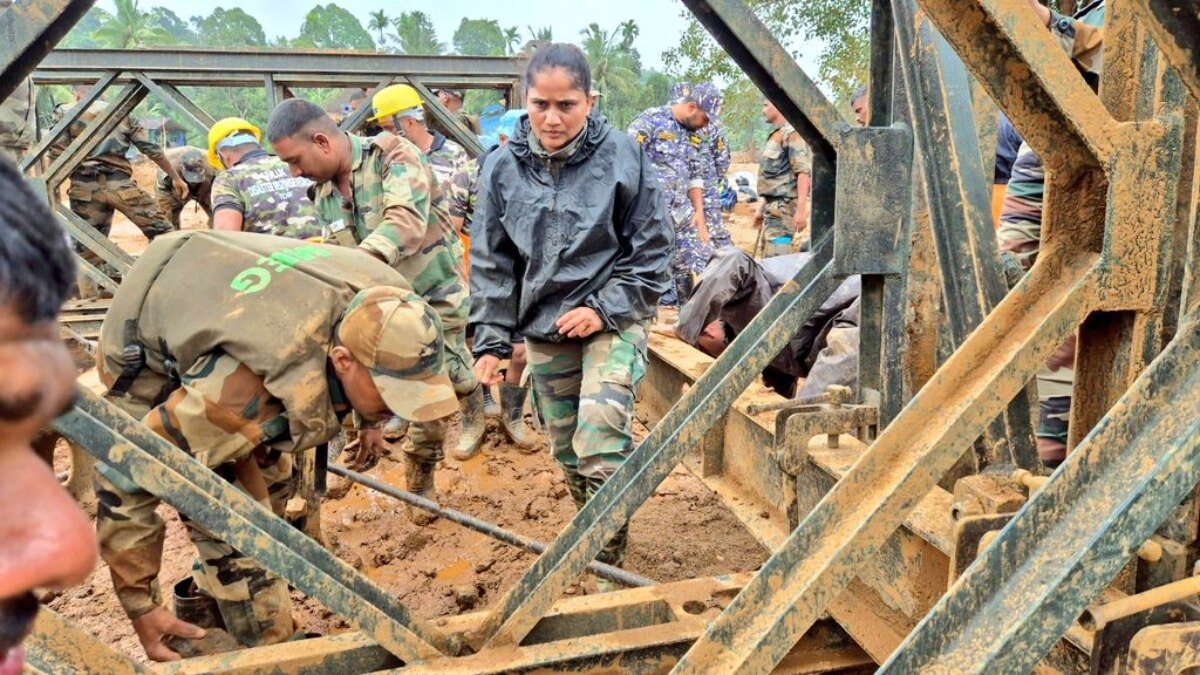What Is A Bailey Bridge? World War II Innovation That Still Comes To Aid During Natural Disasters
The Indian Army constructed a 190-foot Bailey bridge in landslide-hit Wayanad, Kerala, to aid rescue operations. The bridge, with a 24-tonne weight capacity, was completed in record time.

The Indian Army Thursday constructed a Bailey bridge in the landslide-hit Wayanad in Kerala, connecting Chooralmala and Mundakai. The 190-foot-long bridge, with a capacity to carry 24 tonnes of weight, was erected to help in the ongoing rescue operation. Over 200 people have died in the natural disaster.
The Bailey bridge was completed in record time. The Army team started the construction at 9 PM on July 31 and completed it by 5:30 pm on August 1.
This is not the first time the Army has built a Bailey bridge in a natural calamity zone. A 70-foot bridge was built in Gangtok in June after floods cut off connectivity in many areas of Sikkim.
Prior to that, the Army built a 200-foot Bailey bridge, one of its longest, over the Teesta river in Sikkim after last year’s devastating floods.
ALSO READ ON ABP LIVE | ISRO's Before And After Images Show Devastation In Wayanad After Landslides
What Is A Bailey Bridge?
A Bailey bridge is a type of portable, pre-fabricated, truss bridge that was extensively used during World War II. It was designed for rapid deployment by military engineering units to provide temporary bridges capable of supporting heavy loads, such as tanks and other military vehicles. The Bailey bridge is renowned for its simplicity, modularity, and strength.
The Bailey bridge was said to have been invented by Sir Donald Coleman Bailey, a civil servant in the British War Office. According to Britannica.com, Bailey was an engineer and the design conceived by him was approved in late 1940, at a conference held to discuss how to provide temporary spans that were capable of taking heavy loading in war zones. His concept of a strong but lighter prefabricated steel truss was to revolutionise military engineering. The bridge's design was a response to the need for a versatile, easily transportable, and quickly assemblable bridge that could replace the destroyed bridges in wartime.
The first Bailey bridges were used in 1942 by the British Army in the North African campaign. They proved to be highly effective, leading to widespread adoption by Allied forces.

Key Characteristics Of A Bailey Bridge, And How They Are Built
Bailey bridges are designed for rapid construction in difficult conditions without the need for heavy equipment or sophisticated construction methods. The bridges are made of modular steel panels, which can be easily transported and assembled using manpower alone.
The key characteristics include their modularity, portability, strength, and versatility.
The bridges can be built in various lengths and strengths by connecting multiple panels, and their components can be transported in trucks and assembled on-site. The design supports heavy loads, including tanks and other military vehicles, and they can be used in various configurations to span different types of gaps and obstacles.
The construction of a Bailey bridge involves assembling prefabricated panels into sections, which are then connected to form the bridge's span. The panels are connected using pins and bolts, creating a truss structure that distributes the load evenly. The construction can be done using minimal tools.
ALSO READ ON ABP LIVE | Wayanad Floods 'Directly Linked To Global Warming': Climate Experts Blame Rising Air And Sea Temperatures
Bailey Bridges in India
In India, Bailey bridges have played a significant role in connecting remote and challenging terrains, particularly in the Himalayan regions.
Bailey bridges are frequently used to restore connectivity in the aftermath of natural disasters like floods and landslides.
In border areas, Bailey bridges ensure the movement of troops and supplies. In areas like Ladakh and Himachal Pradesh, Bailey bridges have facilitated tourism by providing access to remote scenic locations.
Related Video
Delhi flood update: once again AAP points out BJP, for Delhi's present situation




























